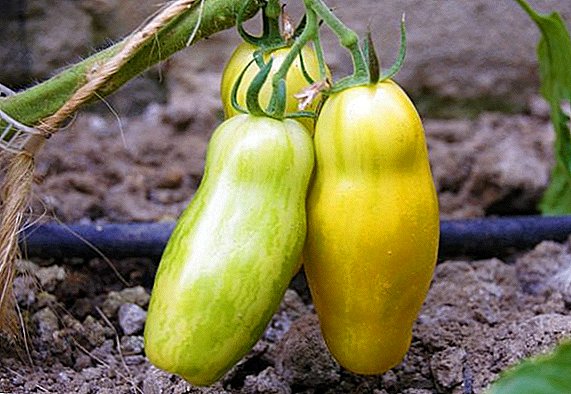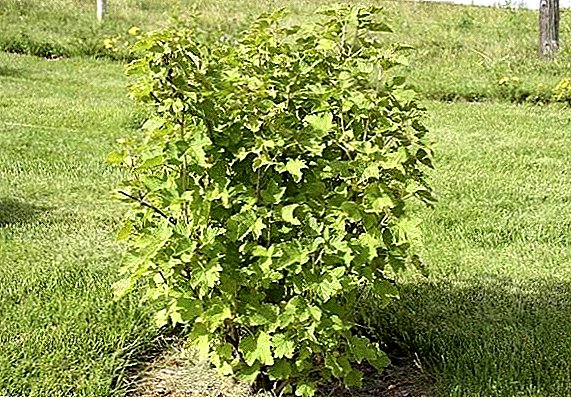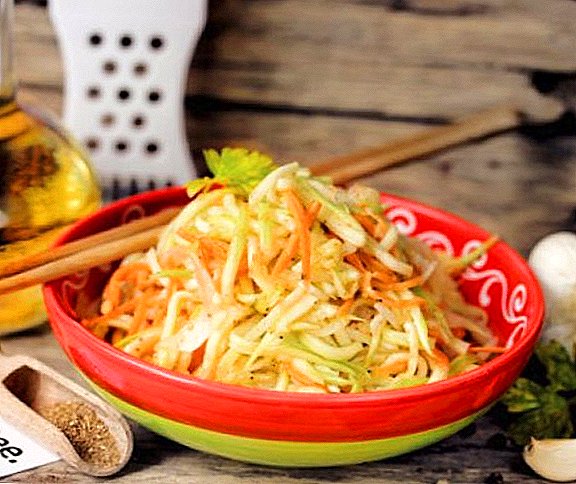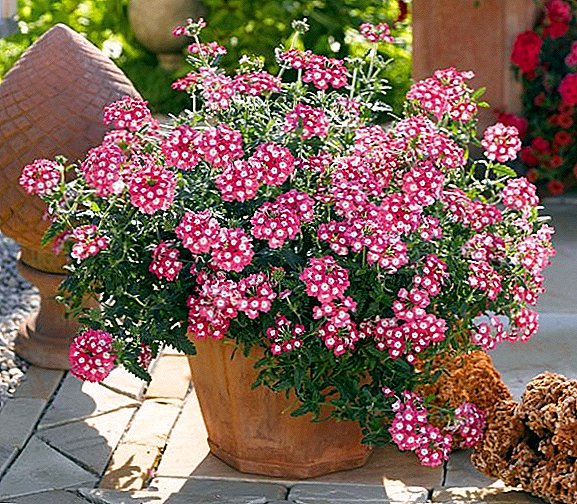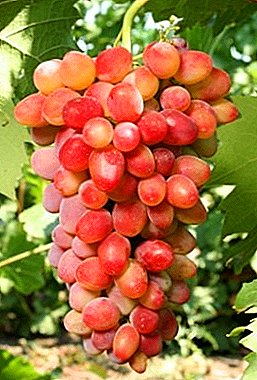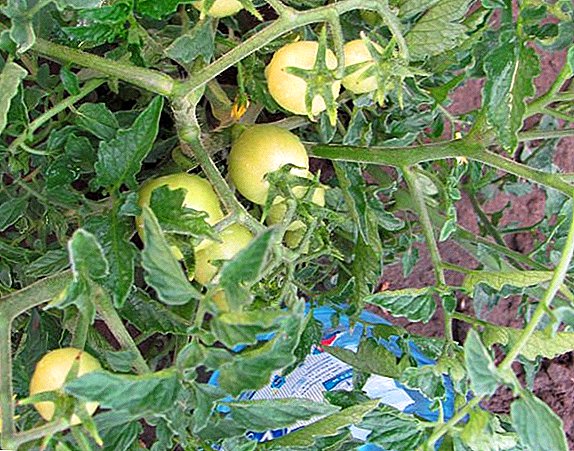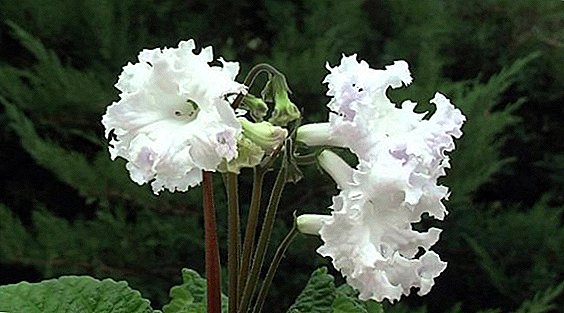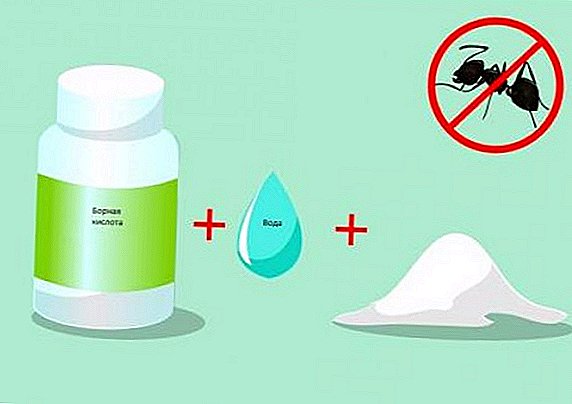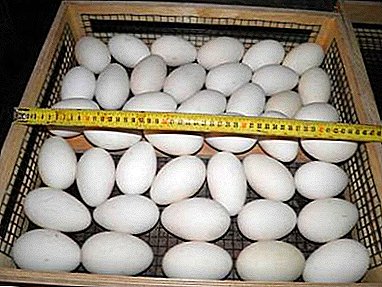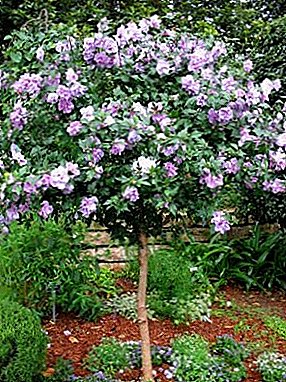
Southeast Asia and the Middle East region is the birthplace of hibiscus. Now these plentifully flowering plants, relatives of mallow, are grown both in room and in garden crops. Hibiscus flowers, also called Chinese roses, are heat-loving plants.
In the open ground of the middle band is able to winter only Syriac or treelike hibiscus - tall shrub with bright green foliage and white, pink, purple flowers of simple or terry form, which unfold together in the summer and appear again and again until late autumn.
Hibiscus tree - planting and care

Lighting and temperature
"Syrian" need sunny and warm place, closed from drafts (when disembarking in the container) and from strong wind (in open ground).
In room culture, rooms with south-facing windows are optimal for him. In summer, hibiscus develops well on the balcony.
Soil composition, planting, transplanting
When landing on the site dig a hole for a seedling twice as big as its root system. A layer of brick or ceramic paving 15 cm thick is placed on the bottom. A ten-centimeter layer of sand is poured on top, then a compost layer of 15 cm, and an equal layer of sand on top. The soil extracted from the pit is mixed with peat and sand: two volumes of land, four volumes of peat, one volume of sand. The resulting mixture poured the roots of seedlings placed in the planting pit. As a result, the root neck should be barely covered. Sapling spud, forming a wide hole for moisture. Watering is carried out on it and, after the moisture is absorbed, the groove is leveled, covered with earth.
 When landing in container the same conditions are fulfilled: obligatory drainage, loose fertile soil. At the bottom of the pot a layer of expanded clay or small pebbles is required. As an optimal primer, a ready mix is used for ornamental shrubs, or they make up a planting substrate of turf and leafy soil, as well as humus in equal quantities with the addition of fibrous peat, loose sand and “wellness” - charcoal.
When landing in container the same conditions are fulfilled: obligatory drainage, loose fertile soil. At the bottom of the pot a layer of expanded clay or small pebbles is required. As an optimal primer, a ready mix is used for ornamental shrubs, or they make up a planting substrate of turf and leafy soil, as well as humus in equal quantities with the addition of fibrous peat, loose sand and “wellness” - charcoal.
Planted young plants annually, mature - a year or two.
Watering
In the warm season Location on need regular, as the soil surface drieswatering with soft water. In case of drought, the bush will need to be watered every day.
AT tub culture regular summer watering joins systematic spraying soft water at room temperature.
Top dressing
In the open ground, summer, bi-fertilizer fertilization with high content is required twice a month phosphorus, but early fallTo help the bush spend the winter, you need to add potash fertilizer.
"Syrian" in container at spring and summer feed up every 10 days mineral complexes intended for ornamental and flowering shrubs. In the spring useful to increase the content nitrogen, but summer - potassium and phosphorus. Use alternately organic and mineral supplements. Autumn and winter is not fed.
 Growth and pruning
Growth and pruning
Hibiscus tolerates "haircut" 3-4 times a year. Pruned shoots can be used for grafting and graft reproduction.
Gradual pruning this shrub can be turned into an elegant tree with a thick crown and abundant summer blooms.
In suitable conditions "Syrian" lives 20 years or more.
Trim Hibiscus is necessary. Pruning forms compact beautiful crown. Besides she promotes abundant bloom as buds are actively formed on young shoots. Besides, for outdoor plants early spring pruning needed as sanitary measure removing shoots affected by winter frosts.
Bloom
Well-groomed, properly trimmed plant blooms long - both in summer and in autumn. A single flower is short-lived, its life is only one day. Therefore, it is important to create such conditions that the buds are formed again and again.
Besides trimming, it is important maintain proper temperature, humidity, light and feed.
 If the temperature is low, not enough moisture or not enough fertilizer, buds are formed, but, not opened, fall.
If the temperature is low, not enough moisture or not enough fertilizer, buds are formed, but, not opened, fall.
No bloom in a well-developed specimen with abundant foliage if it is “overfed” with nitrogen fertilizers.
Flowers do not form and those "Chinese roses", which lack moisture in the period of active growth.
Winter is too warm also does not allow the plant to accumulate enough strength to bloom.
Graft
To get the "Chinese rose" on which at the same time flowers open different varieties and colors, spend green crown vaccinations.
The optimal time of vaccinations - late spring to early summerwhen active growth prevails, not flowering.
In the crown choose a little lignified shoot and cut off, leaving a four-centimeter "stump". They split it exactly in the middle to a depth of 1.5 cm. Insert into the incision the lower end of the graft-graft, "sharpened" on both sides using oblique sections of the same length of one and a half centimeters. The tissues of both branches must coincide: the core - with the core, the bark - with the bark.
The grafted area is wrapped with PTFE tape and give the tissues to grow together within 2 months.
Then the tape is removed, and the accretion zone is covered with garden pitch.

Wintering
In the open ground winter shelter is strongly required for young bushes. Mature specimens tolerate winter much more easily.
In preparation for the winter spend late autumn watering, hillingand in the second half of November bend the branches to the ground, cover with nonwoven fabric (lutrasil, spunbond), then polyethylene and press. Covered with spruce branches.
You can also install frame around the bush and wrap it with a covering material in several layers.
In container culture with the arrival of winter, it is desirable to rearrange the hibiscus in well lighted place with a temperature of about 13 degrees. Watering should be limited.

Breeding
"Syrian" well propagated by cuttings, and in open ground - layering. You can propagate it also seminal method.
Seed propagation
The optimal time is January, February and March. The seeds are soaked in a growth stimulator solution and sown in a moist mixture of peat and sand in equal quantities. Sowing cover film, periodically air, moisturize and keep warm.
The soil temperature for optimum germination is + 27ºС.
Seedlings with several true leaves are planted in separate containers. Flowers will appear on them after 3-4 years.
 Reproduction by cuttings
Reproduction by cuttings
Tree hibiscus propagated by cuttings better in the spring, before flowering begins. Can be used scrap after pruning. Cuttings with several internodes are placed in water for pre-rooting, or they are immediately planted for rooting, deepening by about 10 cm, in light soil: half peat, half sand.
Planting contain warm (23-25 degrees), moisturize, sprayed.
A month later, new leaves appear, the young plant develops rapidly.
 Reproduction by layering
Reproduction by layering
When reproducing with layers, during the season of active growth, one of the branches should be bent to the ground, fixed in the middle part and buried in the soil.
Part of the branch, located in the ground, gives rise to roots, new shoots appear on the stuck branch. When they develop well, the layers are finally separated from the mother bush.
You should first take care of good drainage, deeply dug up the area where the cuttings will take root. At the same time, the soil should be sufficiently moisture-holding.
Diseases and pests
Plant can infect chlorosis: lower leaves fall, young foliage turns yellow. The cause of chlorosis is an excess of calcium, as well as chlorine in combination with a deficiency of nitrogen and iron. It should process the bush a solution of ferrous sulfate, water only with soft, well-settled water and slightly acidify the soil.
 With low air humidity on hibiscus may appear thrips, aphid, whitefly, spider mite. The most reliable and effective method of combating these pests - systemic insecticides.
With low air humidity on hibiscus may appear thrips, aphid, whitefly, spider mite. The most reliable and effective method of combating these pests - systemic insecticides.
The only hibiscus that can withstand the winter of the middle band - Syrian or treelike - is able to grow for a long time and please the eye with abundant flowering with proper care. Such care is easy to provide, and successfully performed vaccinations additionally decorate a resistant bush with simultaneously revealing flowers of different varieties and colors.
A photo
See photos of Chinese rose tree below:







